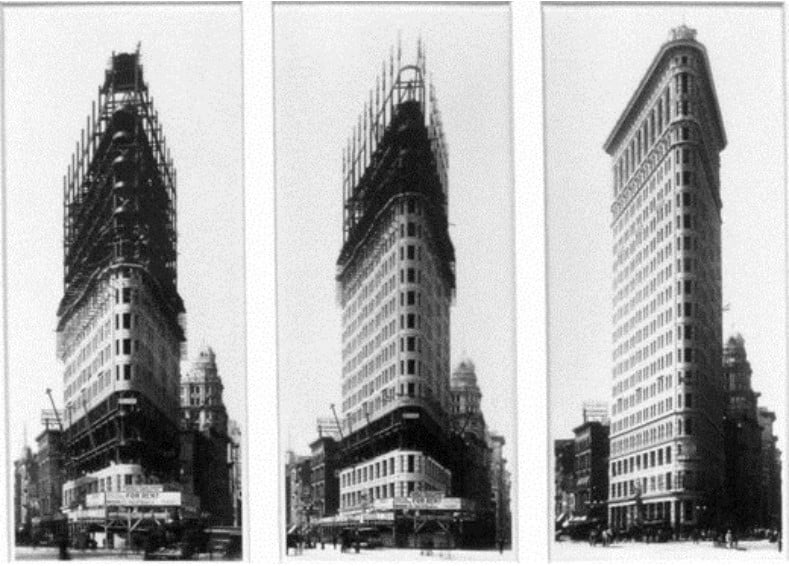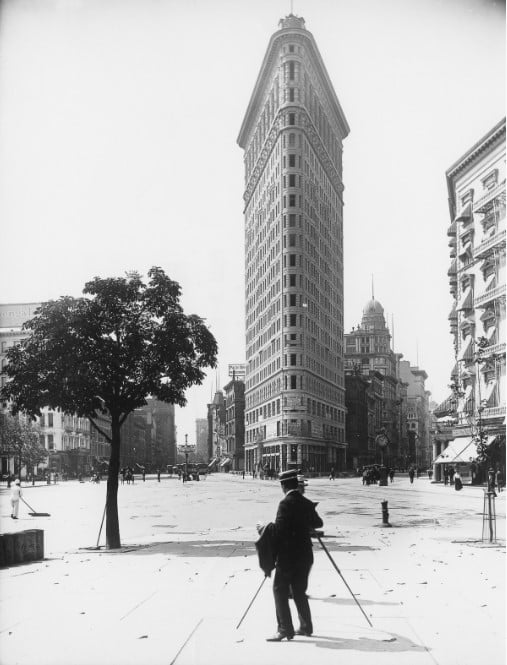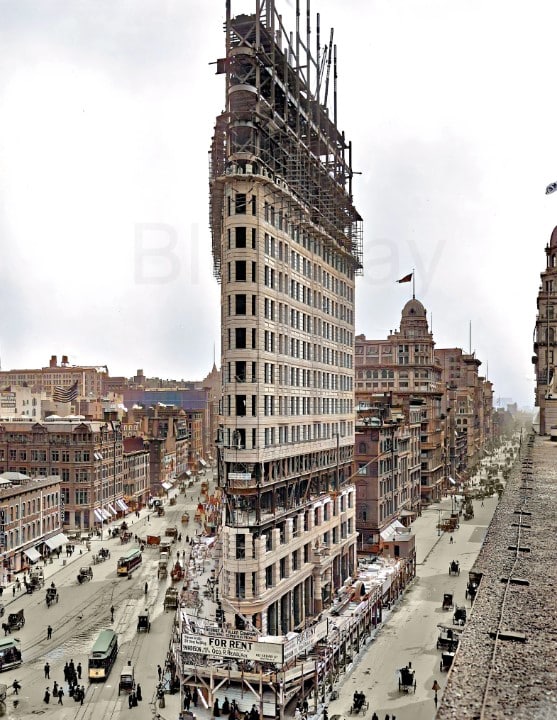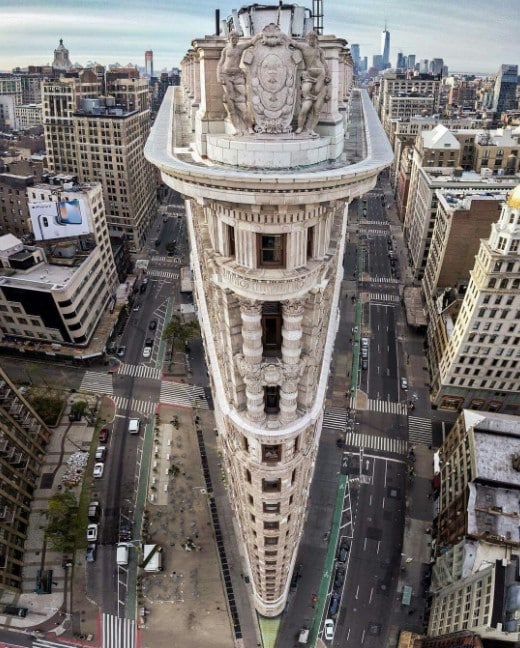A New York Icon: Flatiron Building Constructed In 1902
The iconic Flatiron Building is one of New York City’s most famous and beloved landmarks. This wedge-shaped marvel has appeared in numerous movies and TV shows such as Spiderman, Bell, Book and Candle, The Boys, Armageddon and so on.
Designated a New York City Landmark in 1966, the Flatiron Building was added to the National Register of Historic Places in 1979 and declared a National Historic Landmark in 1989. Its influence is so significant that an entire neighborhood is named after it.
How Flatiron Building was constructed

The Flatiron Building, originally known as the Fuller Building, is a striking 22-story, 285-foot-tall (86.9 m) triangular structure located at 175 Fifth Avenue in Manhattan’s Flatiron District.
This iconic building, designed by Daniel Burnham and Frederick P. Dinkelberg, opened its doors in June 1902 and was humorously dubbed “Burnham’s Folly” during its early days.
Architect Daniel Burnham chose the unique triangular design to optimize the building’s footprint on the wedge-shaped parcel of land at the intersection of Fifth Avenue, Broadway, and 22nd and 23rd Streets.
The plot of land was known as the Flat Iron, and the building, meant to serve as the headquarters for the Fuller Company, was initially called the Fuller Building.

Decades ago, constructing a 285-foot-high building in New York would have been nearly impossible or highly impractical. Tall buildings became feasible and safe with the advent of steel skeletons, but until 1892, New York required masonry in building structures.
The Flatiron Building’s steel frame, designed by Purdy and Henderson, was built to endure four times the area’s maximum wind force.
When it comes to the facade, it is designed in three vertical sections, similar to a classical column. Its three-story base is covered in limestone, while the upper stories are adorned with glazed terracotta.
The western and eastern sides of the building come together to form a “peak” at the northern corner, where Fifth Avenue, Broadway, and East 23rd Street intersect. This unique shape is due to Broadway’s diagonal path against Manhattan’s grid.
The site measures 197.5 feet on Fifth Avenue, 214.5 feet on Broadway, and 86 feet on 22nd Street. Above ground, all three corners of the triangle are rounded. Interestingly, despite its name, the site forms a scalene right triangle rather than an isosceles one.
The building was severely criticized

When the Flatiron Building was unveiled in 1902, it faced significant criticism. The New York Times called it a “monstrosity,” and many feared that its narrow, three-sided design, only six feet wide at the front, would collapse in strong winds.
Sculptor William Ordway Partridge labeled it “a disgrace to our city, an outrage to our sense of the artistic, and a menace to life.”
The building’s triangular shape also drew negative attention from tabloids, which speculated that its position caused dangerous wind-tunnel effects. Critics even blamed its design for the death of a bicyclist who was blown into traffic and killed in 1903.
Despite the initial backlash, the perception of the Flatiron Building changed over time. Those who once criticized its design eventually came to recognize it as an architectural gem.
It became a NY icon

The Flatiron Building, one of New York City’s first skyscrapers, stood out not just for its height but also for its unique steel-skeleton structure. The construction process was visible to the public, making it a spectacle for onlookers.
Structural engineers took extra care to reinforce the frame, ensuring the building could withstand the strong winds common in the area.
Despite these precautions, the swift pace of construction – with a floor completed each week once the foundation was laid – likely didn’t ease the concerns of those watching the building take shape.
Once the building was completed, and despite facing criticism from various quarters, the public embraced what became the inaugural skyscraper north of 14th Street.

Photographers like Alfred Stieglitz and Edward Steichen, as well as artists such as Childe Hassam and Albert Gleizes, paid homage to the Flatiron through their creative works.
While the building’s unique shape initially sparked conversation, its Beaux-Arts facade, inspired by the Renaissance, also commanded attention.
The Flatiron Building, a landmark in New York, is famously associated with the term “23 skidoo.” This phrase gained popularity due to the building’s effect on the windy intersection it occupies.
The powerful downdrafts and updrafts created by the skyscraper would often lift the skirts of women strolling along Fifth Avenue’s upscale Ladies’ Mile. Hoping to catch a glimpse of an ankle or calf, boys and men would gather around the Flatiron.
Policemen, aiming to disperse these onlookers, would shout “23 skidoo.” While “23” and “skidoo” were already slang for “get out of here,” their combination, possibly inspired by the building’s position on 23rd Street, is thought to have originated from this location.

